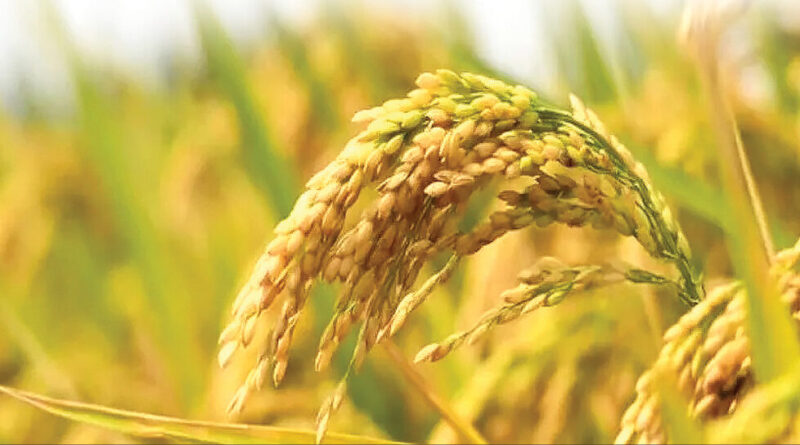Punjab’s paddy yield rises 12.5% over a decade despite water crisis
Punjab’s water-guzzling paddy cultivation continues to be a lucrative choice for farmers, underscored by a 12.49% increase in the average state-wide yield over the past decade (2015-16 to 2024-25). This upward trend persists despite growing concerns and calls for diversification to conserve the state’s dwindling groundwater reserves.
Data compiled by the state agriculture department, based on crop-cutting experiments, illustrates a generally upward trend in Punjab’s average total paddy yield. The average yield calculations include all varieties of paddy, including basmati. While the trend has seen some fluctuations, a notable increase is evident in the more recent years, particularly from 2022-23 onwards. The highest average yield was recorded in 2023-24 at 6,740 kg/hectare, followed by a slight dip to 6,674 kg/hectare in 2024-25.
This reliance on paddy is largely a result of farmers shifting away from cotton. Successive pest attacks caused cotton cultivation to plummet from 3.35 lakh hectares in 2015 to a low of approximately 99,000 hectares in 2024. However, cotton saw a revival this year, registering a 20% increase to reach 1.20 lakh hectares. Meanwhile, in 2024, paddy was sown over 32.44 lakh hectares, which included 6.71 lakh hectares under basmati cultivation.
KS Pannu, former agriculture secretary, expressed concern over the limited success in diverting farmers from paddy cultivation. He termed it a “disturbing trend” that cotton farmers have recently transitioned to paddy. Meanwhile, Pannu also questioned the state govt’s decision to advance paddy cultivation by two weeks to June 1, which could lead to difficulties as harvesting might be adversely affected by rainfall.
According to KS Aulakh, former vice-chancellor of Punjab Agricultural University (PAU), paddy remains a reliable choice for farmers due to two main factors: the assurance of the minimum support price (MSP) and its resilience as a hardy crop that is not easily affected by adverse weather conditions.
Among the districts, Sangrur has consistently demonstrated a high average paddy yield in Punjab, starting from 7,268 kg/hectare in 2015-16 and ranging up to 7,728 kg/ hectare in 2023-24, ranking among the top districts and showing a general upward trend over the past decade. Hoshiarpur witnessed its yield climbing from 5,282 kg/ hectare in 2015-16 to 6,505 kg/ hectare in 2024-25. Similarly, Kapurthala demonstrated a consistent rise, moving from 5,995 kg/ hectare to 7,216 kg/ hectare over the decade.
The districts falling in the basmati belt, meanwhile, displayed more mixed yield patterns, experiencing both peaks and troughs over the ten-year period. Amritsar, for example, saw a dip to 4,452 kg/ hectare in 2018-19 before recovering and showing an upward trend to 5,179 kg/ hectare in 2024-25, while Gurdaspur generally maintained healthy yields, ranging from 4,268 kg/ hectare (2015-16) to 6,133 kg/ hectare (2024-25) despite these variations.
Despite devastating floods in parts of Punjab in 2023, farmers achieved a bumper paddy crop, with production increasing to 210 lakh metric tonnes (LMT), up from 205 LMT in 2022. For the upcoming kharif marketing season 2025-26, the minimum support price (MSP) for paddy has been increased to Rs 2,369 per quintal for common paddy and Rs 2,389 per quintal for grade-A paddy.
The Punjab govt has been actively promoting the cultivation of the PR-126 paddy variety as a step towards groundwater conservation. Developed by the PAU, PR-126 is a shorter-duration variety, maturing in approximately 123-125 days, significantly less than the traditional Pusa-44 which takes around 160 days.
Meanwhile, the state govt has imposed a ban on the cultivation and sale of the long-duration Pusa-44 paddy variety and the unauthorised hybrid paddy seeds. The ban came in wake of concerns over rapid groundwater depletion, increased input costs (fertilisers, pesticides), higher susceptibility to diseases like bacterial blight, and the issue of stubble burning associated with Pusa-44’s heavier residue. Farmers in areas with saline groundwater have been opposing the ban.
Average Paddy Yield (kg/hectare)
2015-16: 5,933
2016-17: 6,193
2017-18: 6,516
2018-19: 6,167
2019-20: 6,020
2020-21: 6,631
2021-22: 6,478
2022-23: 6,479
2023-24: 6,740
2024-25: 6,674
This article has been republished from The Times of India.

